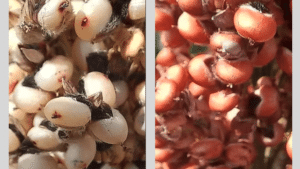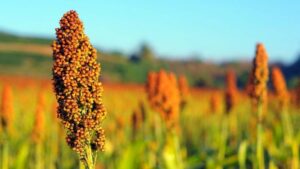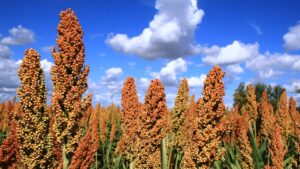Sorghum is a high-yielding, nutrient-use efficient and secure crop that can be cultivated on over 80 per cent of the world’s agricultural land. Its geographic distribution spans semi-arid to tropical climates, and its rich genetic diversity allows for multiple specialized uses (including grain, forage and an increasing number of food applications as alcohol, beer, floor and semolina). In Europe, several types of sorghum can be seen: red, white grain sorghum, where the dwarf stemmed types are suitable for mechanical harvest, and forage sorghum which is a tall, thick-stemmed type of sorghum, with a high dry matter yields and is usually produced for green mass yield for silage or bio-energy usages. Sorghum requires little water and as water resources become more constrained and growing populations require more productivity from less arable land, sorghum is poised to meet the growing needs of both traditional agriculture and bio-industrial processes.
There are several advantages of sorghum cultivation in Europe:
- Very complete outlets in all segment: feed, food, forage, bioenergy and biomaterial.
- Low need for inputs (fertilization & crop protection products).
- Security of grain production in superficial or medium deep soil without irrigation
- Nutritional value of sorghum grain are comparable to maize
- Low pathogen stress
- In crop rotation, it serves as a good previous crop for spring crops such as Sunflower or Maize.
- More sorghum farmer experts with better cultivation knowledge
However, there are still several hurdles to take. For example, there is a strong need to better organize the sorghum market and to stimulate the processors. Another problem is the low availability of sorghum for the whole chain. In addition, there is a clear need to stimulate the storage agencies and to increase the crop cultivation knowledge of farmers.
Luckily, during the past two years, a lot of important initiatives have been taken for sorghum development in Europe, such as the organization of the first European sorghum congress in 2016. On top of that, subsidies were received from the European Union for the promotion of sorghum in seven countries: Spain, France, Italy, Romania, Bulgaria, Ukraine and Russia, accompanied by a strong communication program to be launched starting from June of 2017. There is also an initiative to create a European sorghum association to lead all the initiatives, to be launched officially in Brussel September 2017. And discussions on the post-2020 CAP program include the idea to introduce a higher place of Sorghum in the UE with motivate farmers on sorghum cultivation and motivate processors and consumers towards higher sorghum use.









